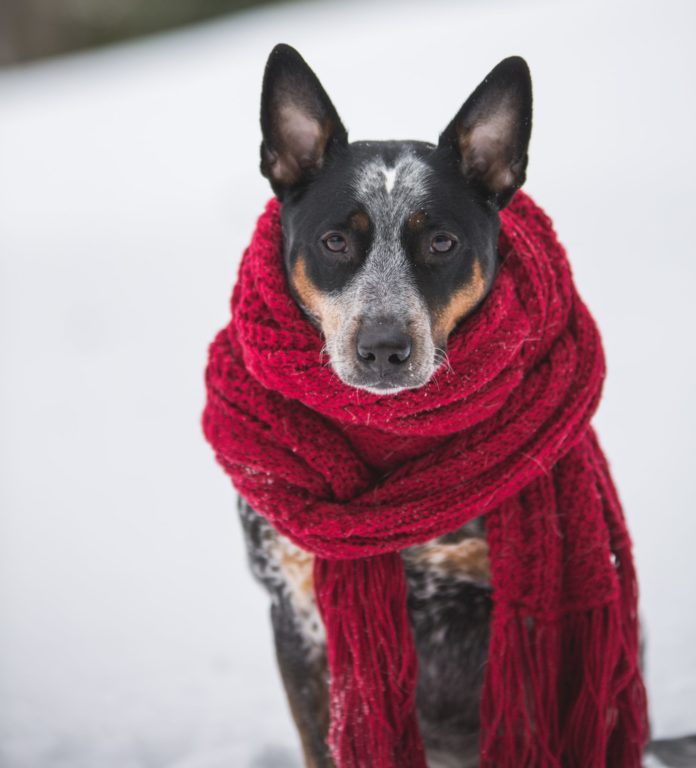Well, those people who forecast these things say we are starting a long cold winter in Calgary. I don’t always want to walk my dog, but he is ready and willing. Most dogs are amazingly well equipped to deal with the cold weather, but not every breed or individual can deal with this kind of cold without precautions.
When dogs first walk on the cold snow you often see them limp or hold a paw up as they run around. Then given some time they seem to become more comfortable. A dog’s pads are equipped with a very effective heat exchange system. Once the paw’s blood vessels adjust to the cold, and if the pad is dry and healthy, the average dog can tolerate most very cold surfaces. Smaller dogs tend to be less tolerant than large breeds, but there are exceptions to the large dog group. Dogs with long guard hairs and thick downy undercoats like shepherds and huskies do fine, but dogs with short fine fur like Dobermans or Weimaraners have little tolerance for cold. Fortunately, pet stores stock doggie coats from your basic knitted sweater to fine sartorial splendor depending on the taste of the human companion.
Some people believe a mat of hair over the dog’s foot pads will protect them. Or they’ll justify the whole dog getting a thick unkempt matted coat saying it will keep them warm. Not true. Matted fur on the paws tends to stay wet, collect ice balls, and hold chemicals such as de-icing agents and salt against the skin. A dog’s paws will adjust to the cold more effectively if the hair is kept reasonably short and clean. After walks rinse and dry your pet’s feet if you suspect he has walked through chemicals. Matted coats get wet, stay wet, and have no ability to insulate your pet. Well-groomed coats insulate from cold in winter and heat in summer.
Some dogs just can’t tolerate cold paws no matter what you do. Consider booties for these individuals. Booties and mukluks come in all shapes and sizes for dogs. It is important that the boot breath and not compromise the blood flow to the paw. Online pet stores and local pet stores carry an array of boots for dogs. If you have a large active pet that will need heavy-duty boots you may want to consider custom-made footwear.
Along with their fur keep your pet’s nails clipped. In our winters, nails may split as your pet goes in and out from the cold and damp and nails may benefit from supplements such as omega fatty acids or fish oils.
My old Labrador would push through the roughest ground cover on the scent of a bird, but in the city he had very sensitive feet and could not tolerate rock salt on his paws at all. Nor would he tolerate boots. I used a paw wax on his feet. Applied to the pad these waxes seal the paw and protect the skin from ice and chemicals. They also protect the pads from cracking with dryness as the dogs go in and out. If your dog tolerates his feet touched the paw waxes are very easy to use. Vaseline is a cheap alternative but lasts only a short time outside and can pick up unwanted dirt.
Darkness comes earlier in the winter, there are some great lights you can attach to your pet’s collar to make sure you and others see him in off-leash parks. If you do cut back on exercise and walks with your pet in intensely cold weather, cut back on the calories going in the bowl too! Like us, weight on our pets is easier to keep off than take off. Finally remember, like us, as dogs become elderly or arthritic, they may require more protection from the elements than they did in their prime. Be as conscious of a senior pet potentially slipping on the ice as you would be of an elderly relative.








